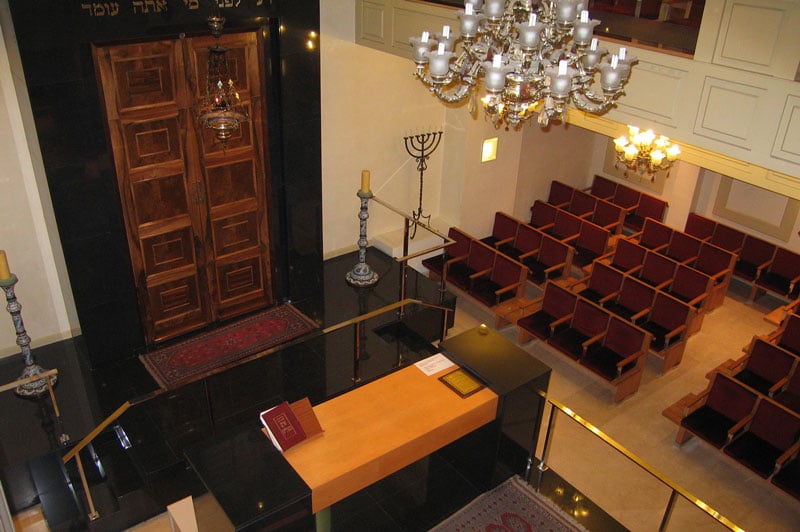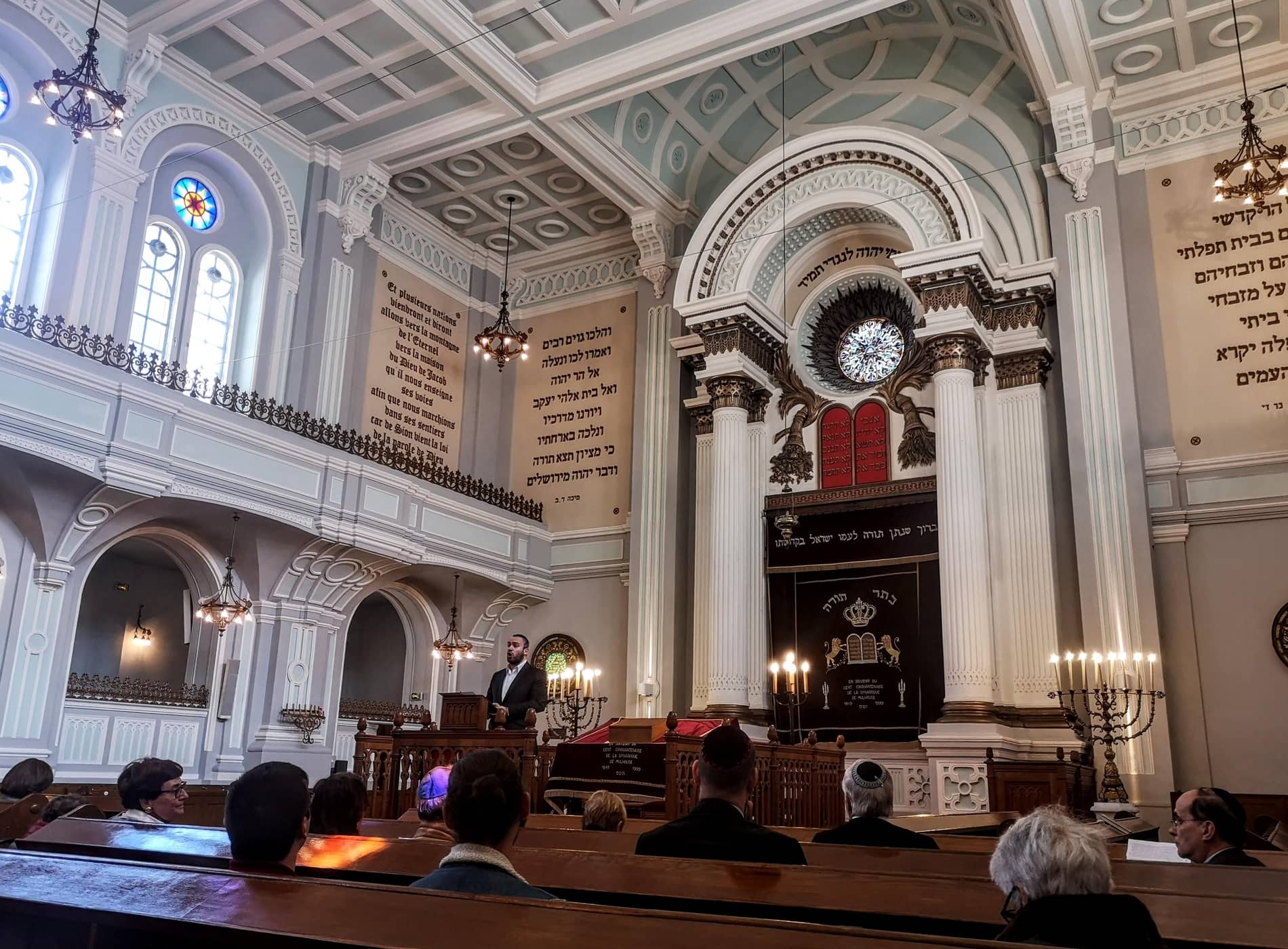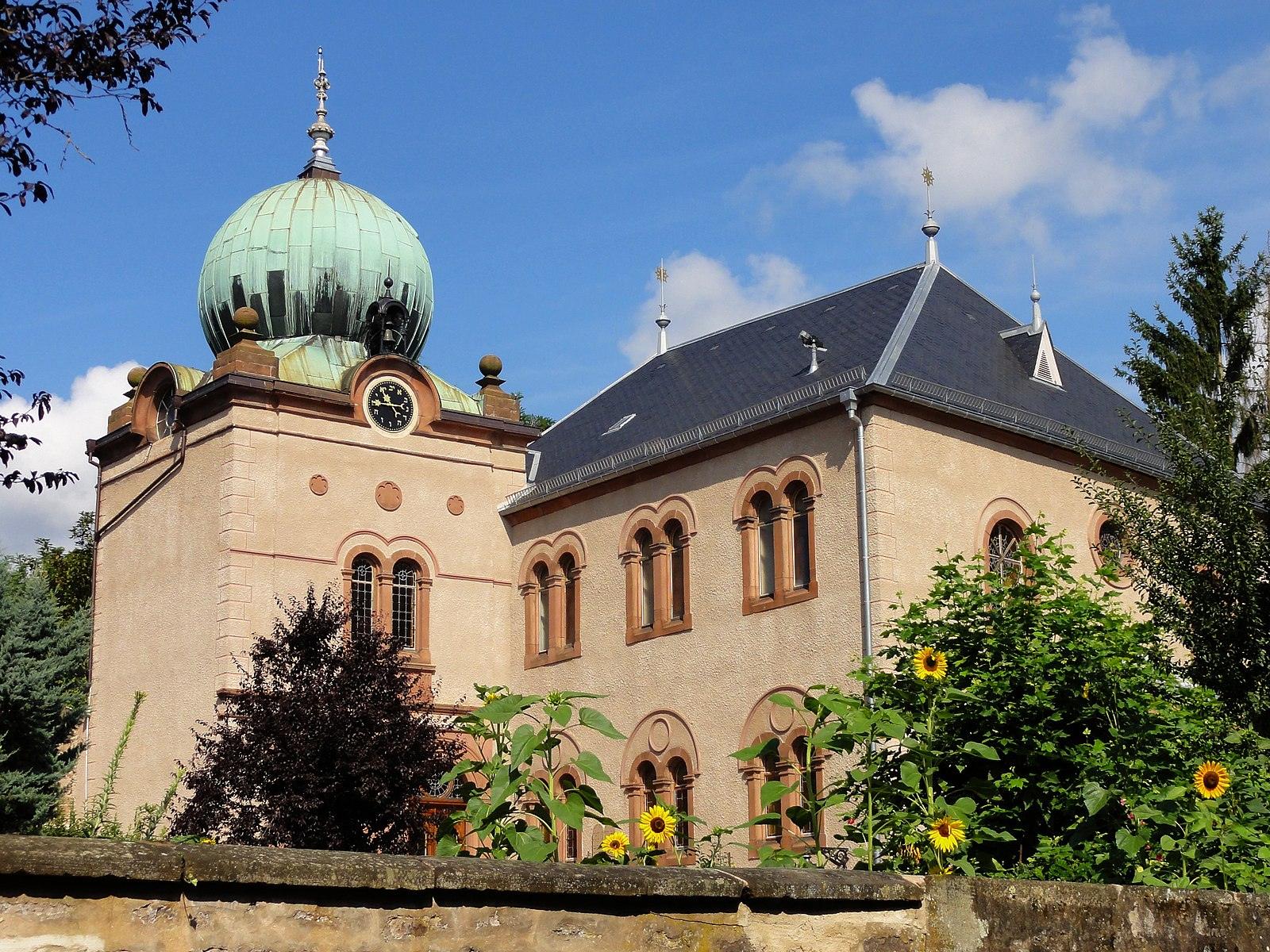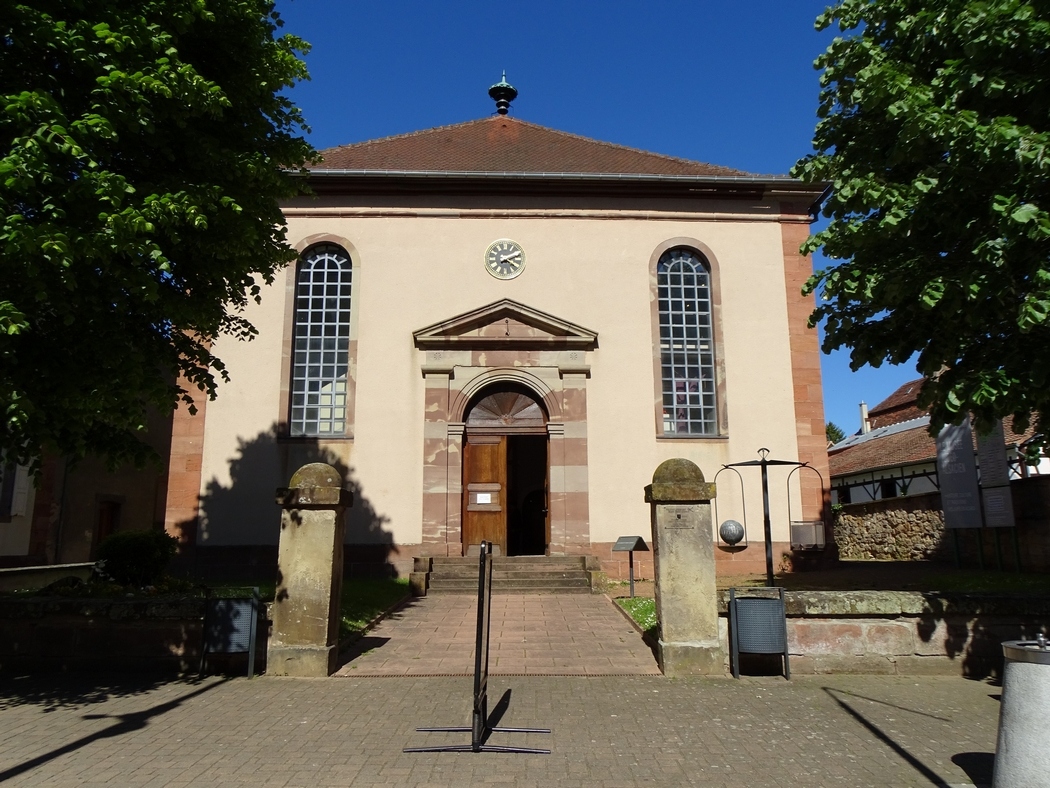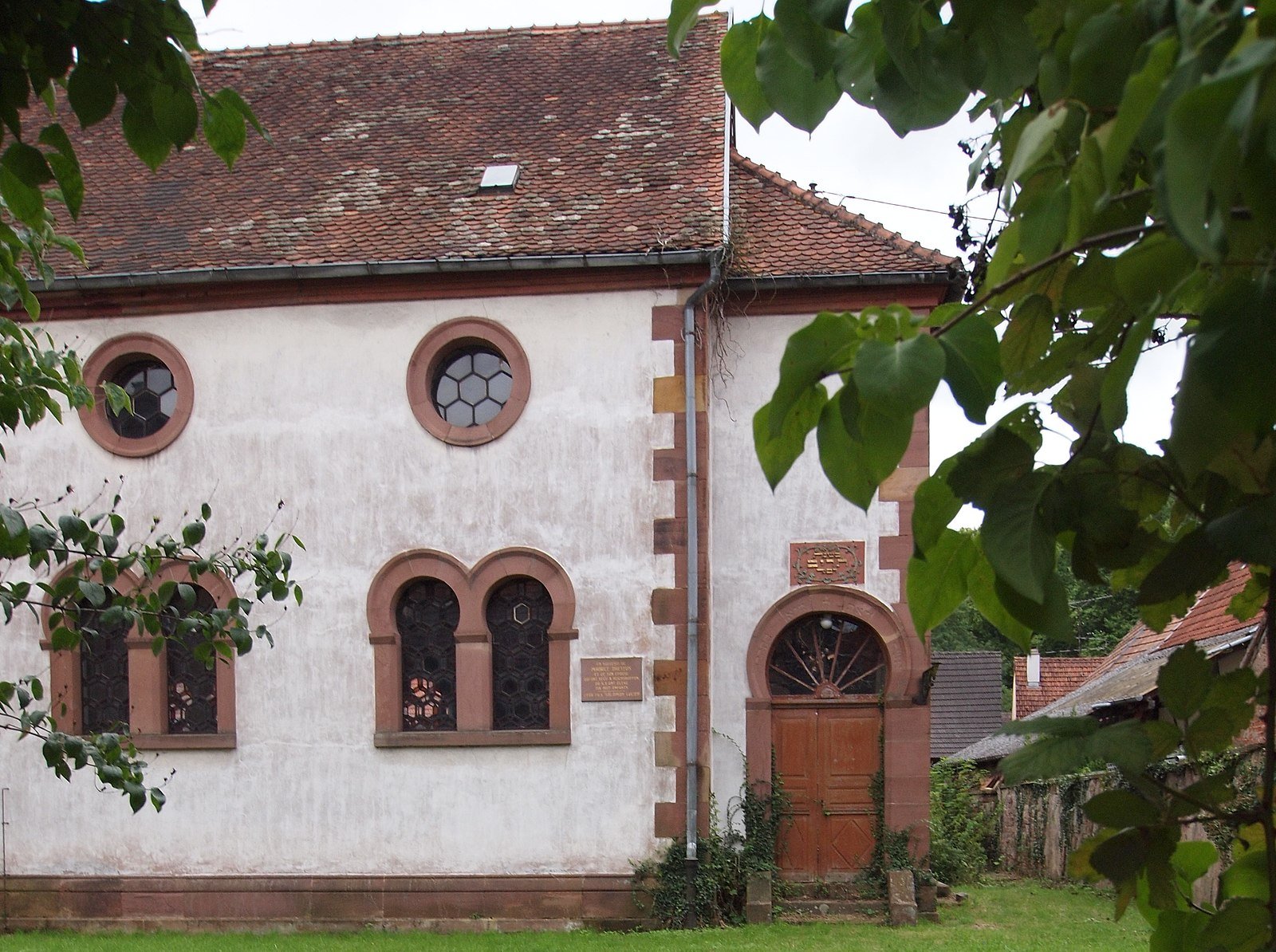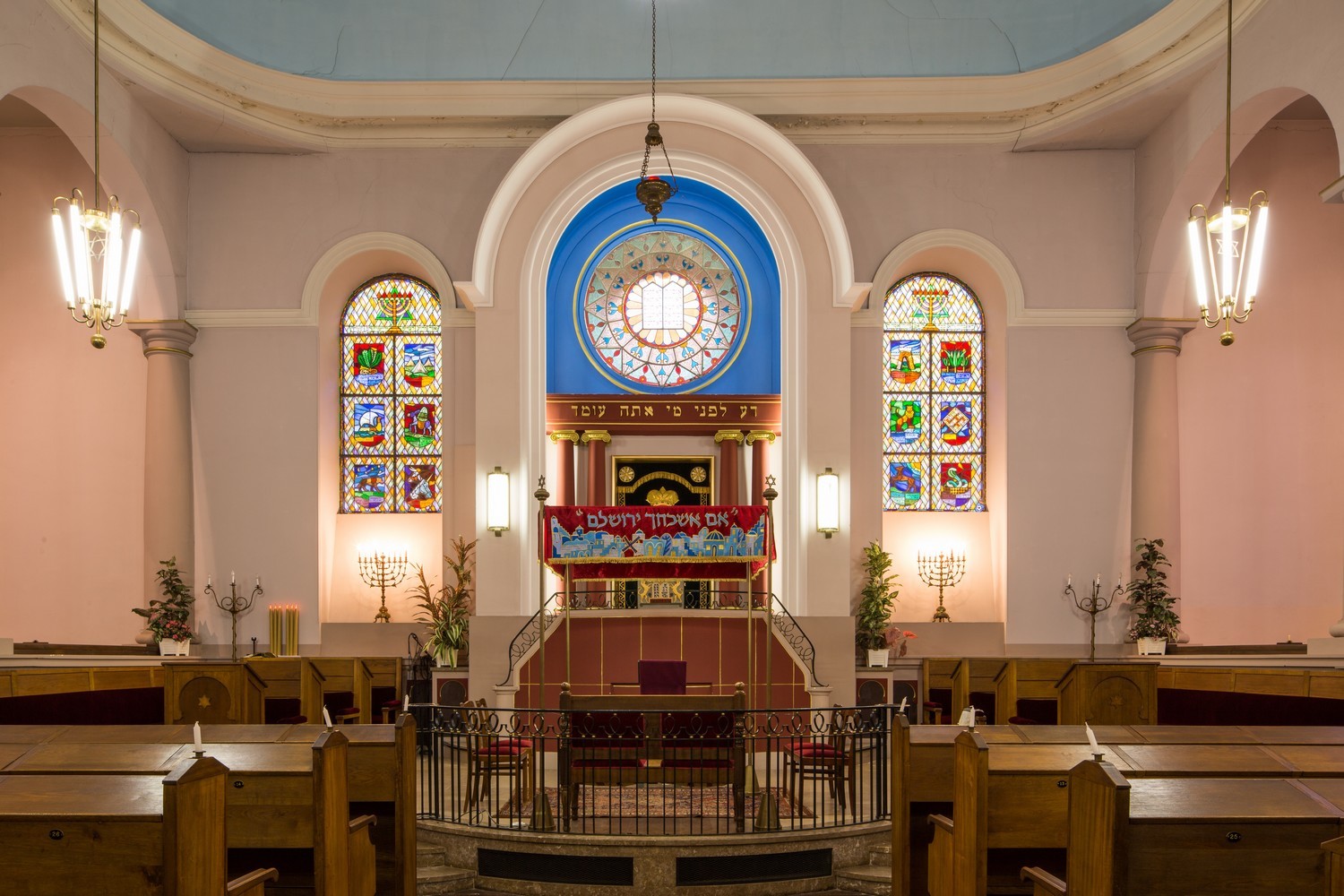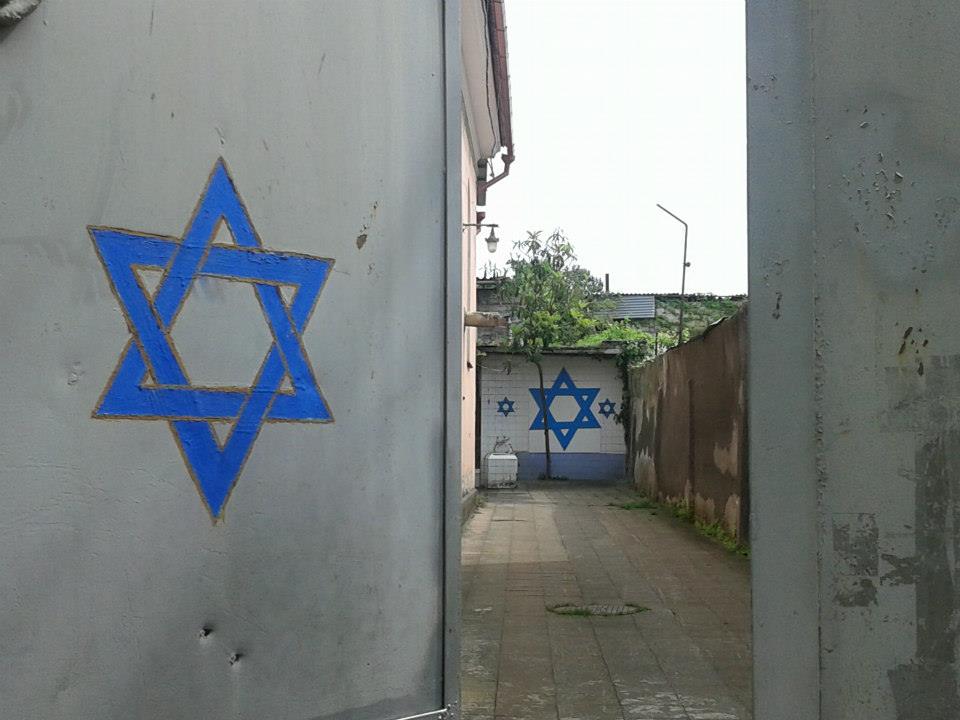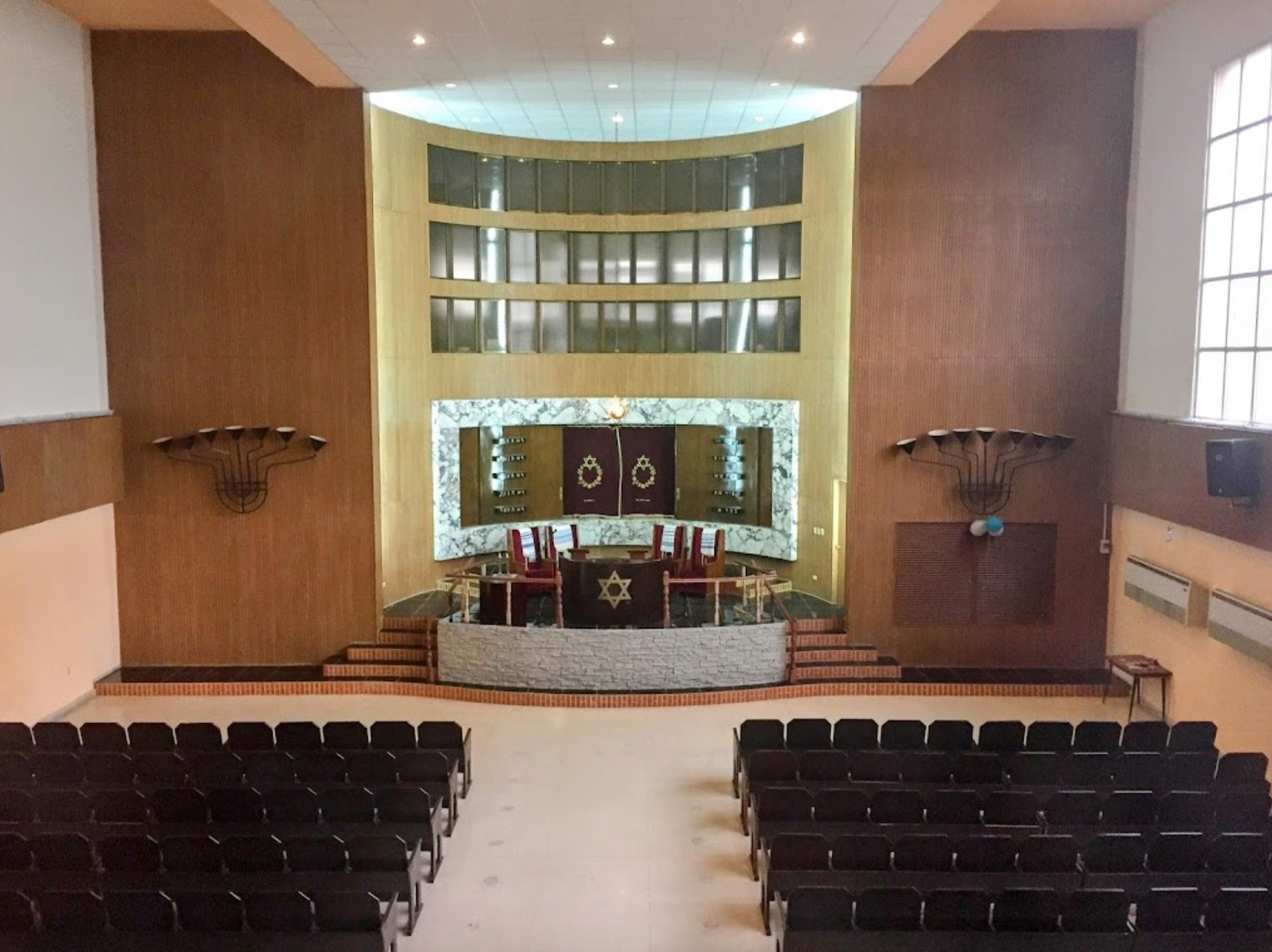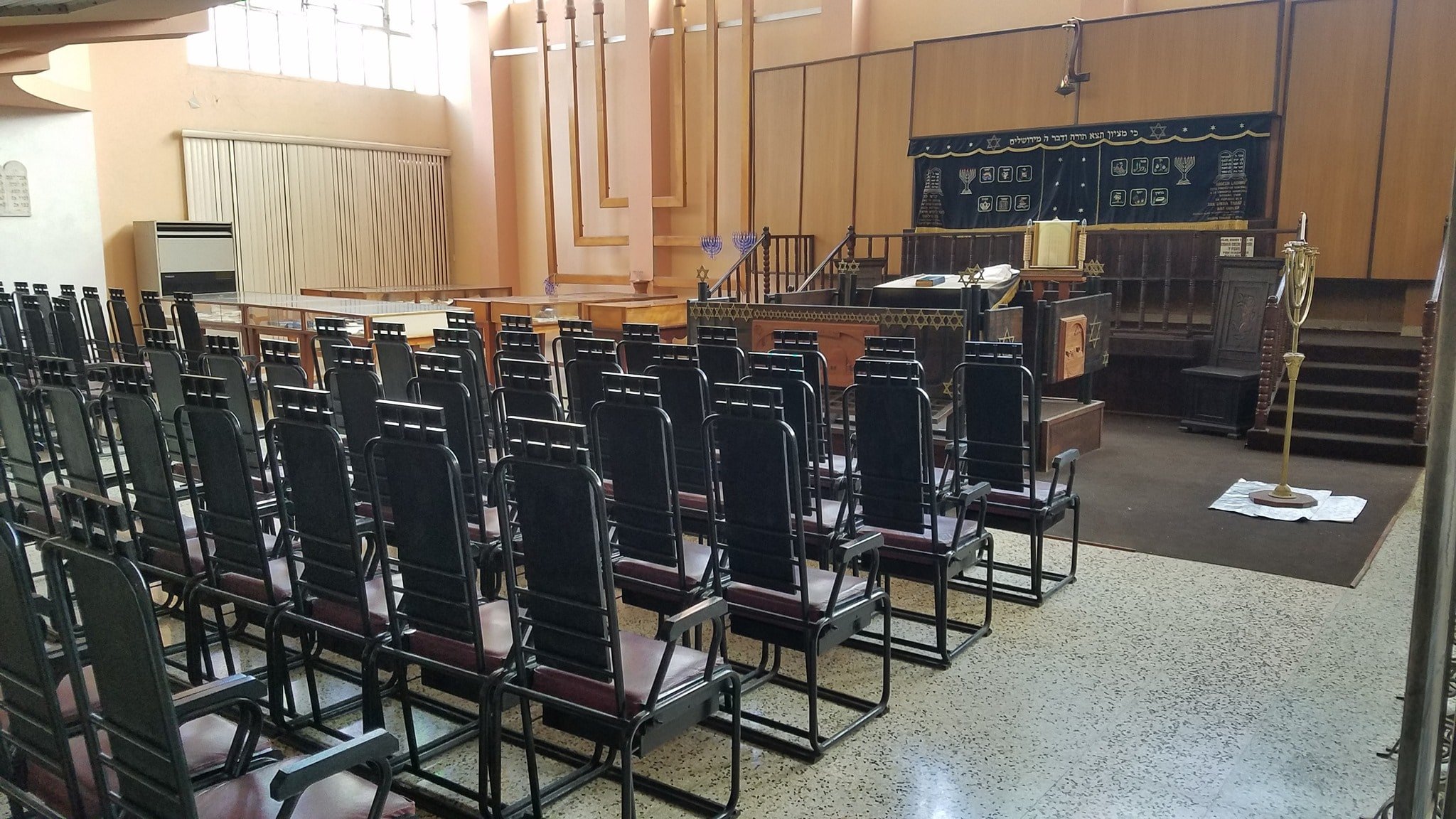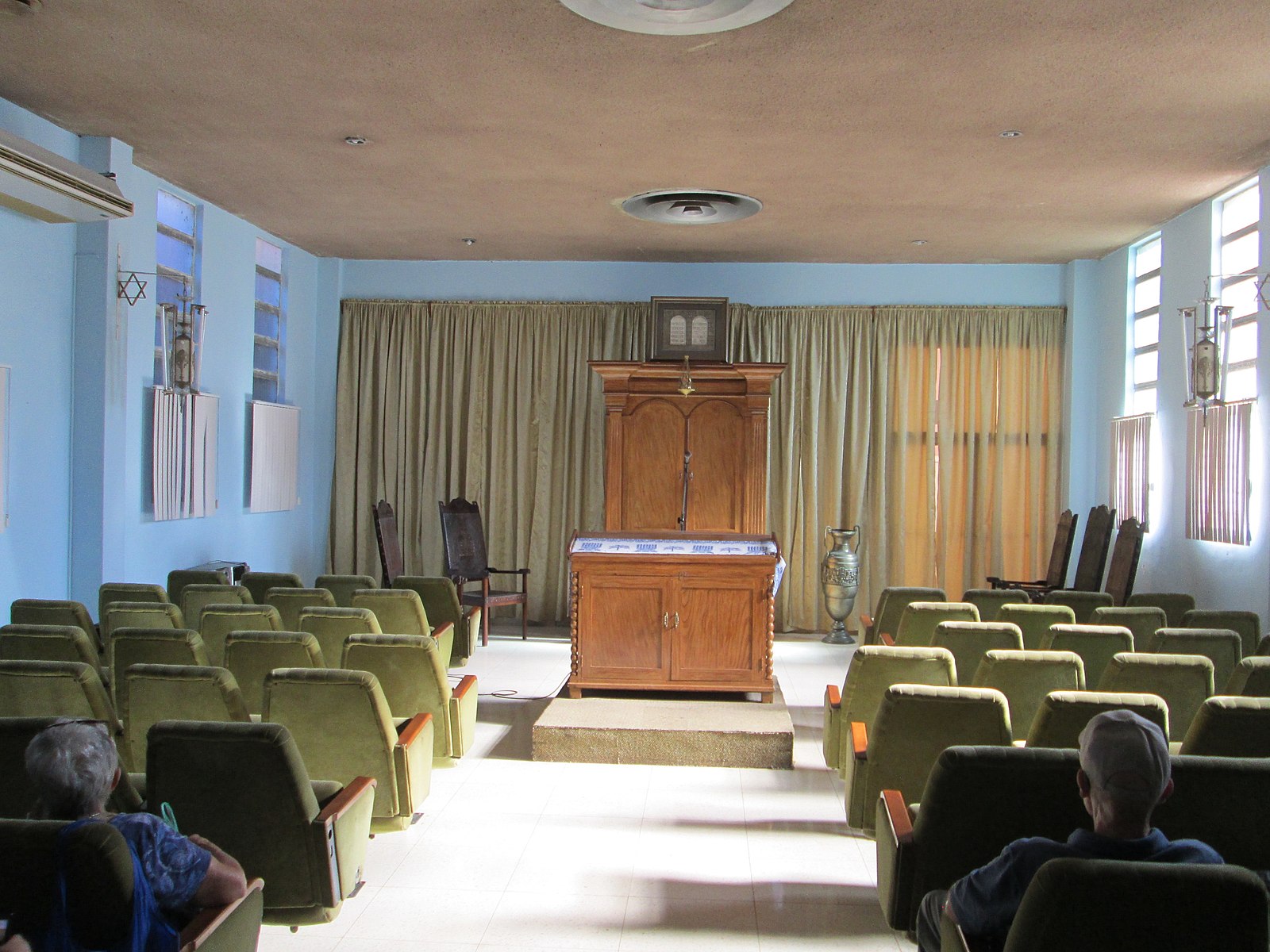Between the end of the 19th century and the beginning of the 20th century, several waves of Jewish immigration arrived in Barcelona. This growing population led to the birth of the Comunidad Israelita de Barcelona in December 1918. The first president was a member of the German community, Mr. Edmundo Metzger (Z “L). The use of the word “Israelita”, and not “Judía”, already reflects the concern of the founders to use a word with a negative charge that prevailed in the collective imagination, since it continued to see the Jews as a deicidal community.
Site Tag: Synagogue
Mulhouse Synagogue
In 1798, the Jews returned to settle in Mulhouse, where there had been no Jewish families since the beginning of the 16th century. The worship was celebrated in various places of prayer which quickly became too small. A new synagogue, in an oriental style, built by JB Schacre, was inaugurated in 1849. The architect plays on the difference in proportions and materials: there is a disproportion between the high and wide nave with slender bays and the narrow side aisles. very low, with squat openings. Inside, the nave is covered with white plaster, while the aisles are in pink sandstone. The gable wall overlooking the rue des Rabbins is the most ornate part of the building; on the triangular pediment, the tables of the law surmounted by an oculus are flanked by seven-branched candlesticks, the menorah, supported by pilasters.
Several beautiful Judaica objects and a set of paintings by the famous painter Mané Katz are displayed in the community center room (Paul Jacob collection).
Ingwiller Synagogue
It is to this location, at the foot of the Northern Vosges and on the edge of an agricultural plain, that Ingwiller undoubtedly owes its origin and probably its commercial vocation. Thus, Ingwiller was elevated to the rank of town on 11 May 1345 and was thus able to hold a market and surround itself with ramparts. Until the end of the 19th century, Ingwiller remained a rural and artisanal town of weavers, laundry workers, and brewers.
Photo credit: © Ralph Hammann – Wikimedia Commons, CC BY-SA 4.0
GFreihalter, CC BY-SA 3.0
GFreihalter, CC BY-SA 3.0
Jewish Alsatian Museum
“Artifacts and places recount history better than books.” This sentence welcomes you as you arrive at the Jewish Alsatian Museum, a museum unlike any other. It displays the culture of the Jews of Alsace, evoking day to day life along with their Christian neighbours. As soon as you enter, a Jewish candlestick is lit at the window of a half-timbered house. A narrow-vaulted passage gives access to a “rue des Juifs”. It is along an ascending gallery that one can follow and discover the slow progress “from slavery to freedom” of these Jews, serfs of the Crown until the French Revolution. Elsewhere, a sloping street lined with stores informs the visitor about the social progress of the last century. A turning point, a dark rotunda: the Shoah… The path is lined with mannequins, ceramic models meticulously showing, in three dimensions, scenes of daily life inspired by engravings, costumed dolls, and architectural models. And here, as the rooms go by, these miserable rural people, peddlers or wholesale butchers, living among poor peasants, appear as rich in tradition, in quiet faith, in conviviality, in biblical knowledge, and in hope.
Image credit: Musée judeo alsacien de Bouxwiller © Association des musées d’Alsace
Reichshoffen Synagoge
This building, dating back to the very end of the Second Republic (1852), is the successor to an ancient schüle” (house of study and prayer in Judeo-Alsatian) of the 18th century which had become too small. This large synagogue has not been used as such since the death of its last cantor in 1967. Its architecture, the work of Albert Haas, is a rare and unique example in Alsace of the transition between the old hidden synagogues of the Ancien Régime (Kingdom of France) and the more ostentatious buildings that became the markers of the emancipation and integration of the Jews during the 19th century.
Image credit: Ikar.us, CC BY 3.0
Haguenau Synagogue
Built in 1820-21 in the NeoClassical style, the synagogue was ransacked during the Occupation and damaged by bombing during the Liberation. The synagogue and its outbuildings were restored and completed in 1959.
Abkhazia Synagogue
A synagogue in Abkhazia was built in the first decade of the 20th century. As of 2009, there were about 150 Jews in Abkhazia, nearly all of them Ashkenazi. The majority of them were elderly, with the average age being 72. The community maintains a synagogue in Sukhumi. The material which was used for the construction of the synagogue, both the interior and the exterior are decorated with paintings.
Beth Shalom Synagogue
Beth Shalom Synagogue, built in 1952, is a synagogue located in the Vedado neighbourhood of downtown Havana. In 1981, much of the original building was sold to the state, and was then turned into the Bertolt Brecht Cultural Center, including a theatre, a music venue, a gallery and a bar. Only part of the structure remains in Jewish hands today. Extensive repairs were undertaken in the 1990s. Beth Shalom is considered the headquarters of the Cuban Jewish Community. The building also houses a Jewish library.
Adath Israel
Adath Israel is the city’s Orthodox synagogue, sitting almost unnoticeableon a crowded, narrow street in the Old Havana district.
After WWI, there was only the Ashkenazi synagogue in Havana, the United Hebrew Congregation. Religiously, it was very liberal with a wealthy, English-speaking membership. This was not a comfortable place for the Yiddish-speaking immigrants from Eastern Europe to worship. In 1923, a Lithuanian immigrant, Ben Zion Sofer, started a minyan in his apartment at Calle Paola No. 17. By 1925, the minyan developed into Congregation Adath Israel, located on the second floor of Calle Jesús María 103. The shul was basic, but served the congregants. The majority of Ashkenazi immigrants were not strictly observant; therefore, Adath Israel was only nominally Orthodox. The prayer services were traditional.
Eventually it was decided to build the new synagogue in Vedado, the heart of the Jewish Quarter of Habana Vieja (old Havana). Architect, Oscar Baisman, and construction engineer, Jacinto Feh Leonard, constructed a modern sanctuary with seating for six hundred people, a chapel and a reception hall. The cornerstone for the $100,000 synagogue was laid in April of 1956 and it was completed on October 9, 1959. Monies were recently been granted to renovate the area, which included the synagogue. The Havana Restoration Commission worked with Jorge Herrera on plans regarding the synagogue restoration, which included full restoration of the sanctuary and an innovative frame for the roof to be used for celebrating Sukkot. Most of the money for the synagogue restoration was donated by wealthy businessmen from Panama and Venezuela. Currently, there are 400 members in the congregation. The congregation has a program to supply vitamins, some medications and toiletries to members who are in need and live nearby.
Adath Israel has remained intact through the years, its doors have never closed, carrying out the religious services of Shajarit, Minja and Arvit daily, maintaining alive the traditions of our Fathers.
Sephardic Center and Synagogue
In 2007 Centro Hebreo Sefaradi Synagogue was described as “the only remaining institutional legacy of the Sephardic presence in Cuba.” Construction originally began in 1957 and the synagogue was completed in 1960 with a 726-seat sanctuary. The main sanctuary was later rented out to the Afro-Cuban band Síntesis for their rehearsals while weekly religious services were held in a small room next door. As of 2010, the synagogue had eighty families constituting 320 members. The majority of congregants were 60 or older. Centro Hebro is affiliated with the Conservative Jewish movement in the United States. There is a small Holocaust memorial at the synagogue with quotations from José Martí.
Image Attribution:
Lebrsm, CC BY-SA 4.0
